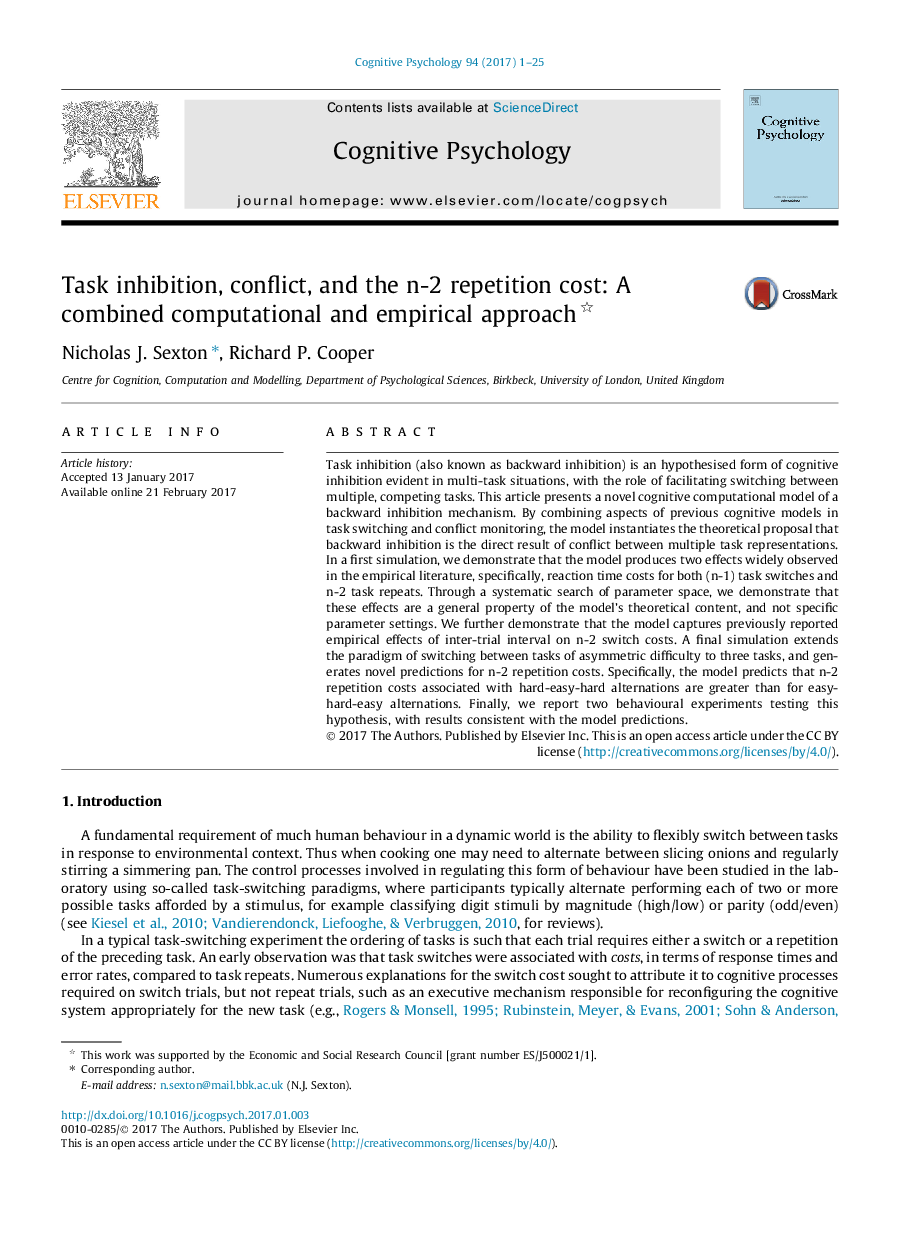| Article ID | Journal | Published Year | Pages | File Type |
|---|---|---|---|---|
| 5039741 | Cognitive Psychology | 2017 | 25 Pages |
â¢An interactive activation (IAC) model of backward inhibition is proposed.â¢The model produces switch costs and n-2 repetition costs in a three-task paradigm.â¢Simulated n-2 repetition costs are modulated by varied intertrial intervals (RCI).â¢Model predictions for asymmetric switching are validated empirically.
Task inhibition (also known as backward inhibition) is an hypothesised form of cognitive inhibition evident in multi-task situations, with the role of facilitating switching between multiple, competing tasks. This article presents a novel cognitive computational model of a backward inhibition mechanism. By combining aspects of previous cognitive models in task switching and conflict monitoring, the model instantiates the theoretical proposal that backward inhibition is the direct result of conflict between multiple task representations. In a first simulation, we demonstrate that the model produces two effects widely observed in the empirical literature, specifically, reaction time costs for both (n-1) task switches and n-2 task repeats. Through a systematic search of parameter space, we demonstrate that these effects are a general property of the model's theoretical content, and not specific parameter settings. We further demonstrate that the model captures previously reported empirical effects of inter-trial interval on n-2 switch costs. A final simulation extends the paradigm of switching between tasks of asymmetric difficulty to three tasks, and generates novel predictions for n-2 repetition costs. Specifically, the model predicts that n-2 repetition costs associated with hard-easy-hard alternations are greater than for easy-hard-easy alternations. Finally, we report two behavioural experiments testing this hypothesis, with results consistent with the model predictions.
